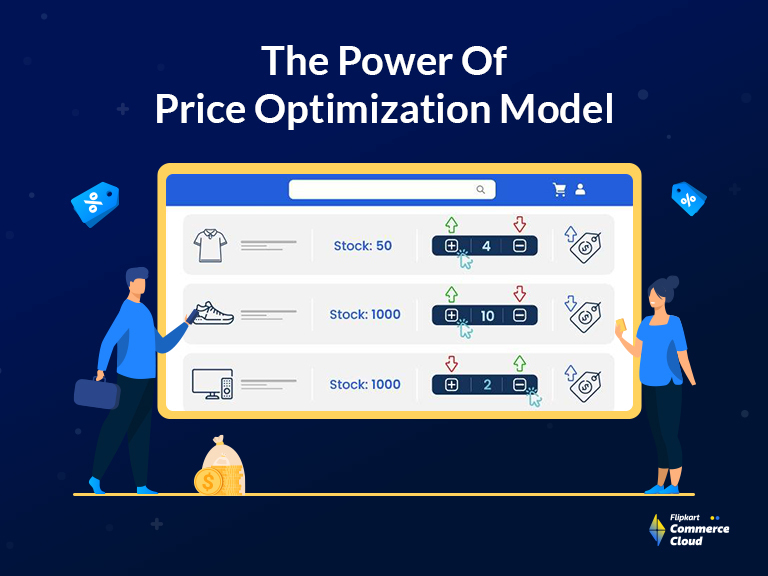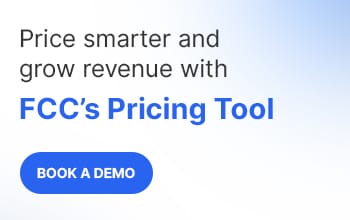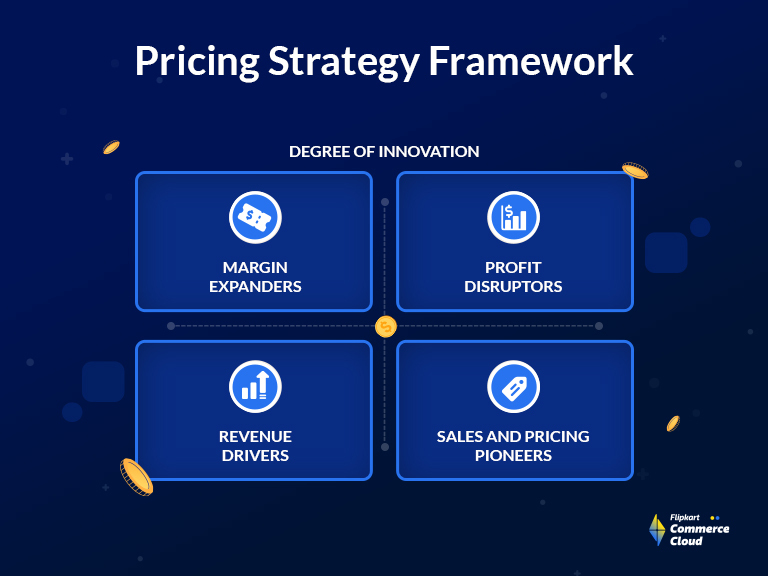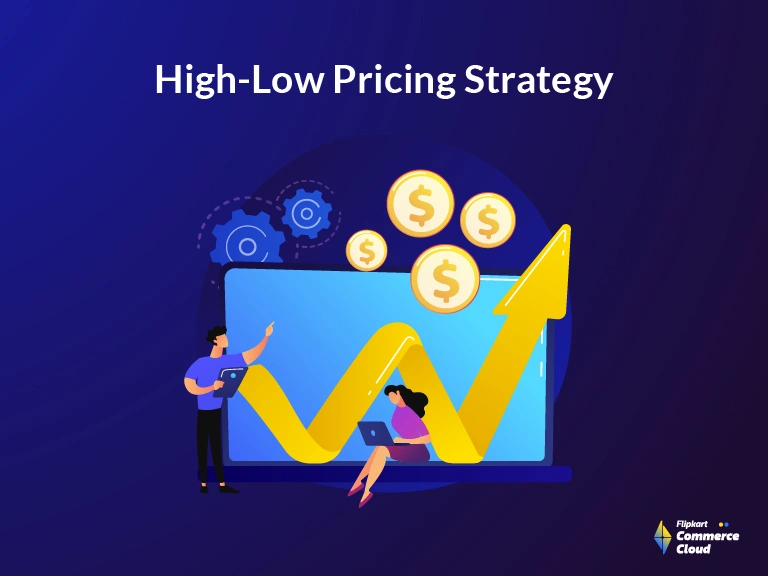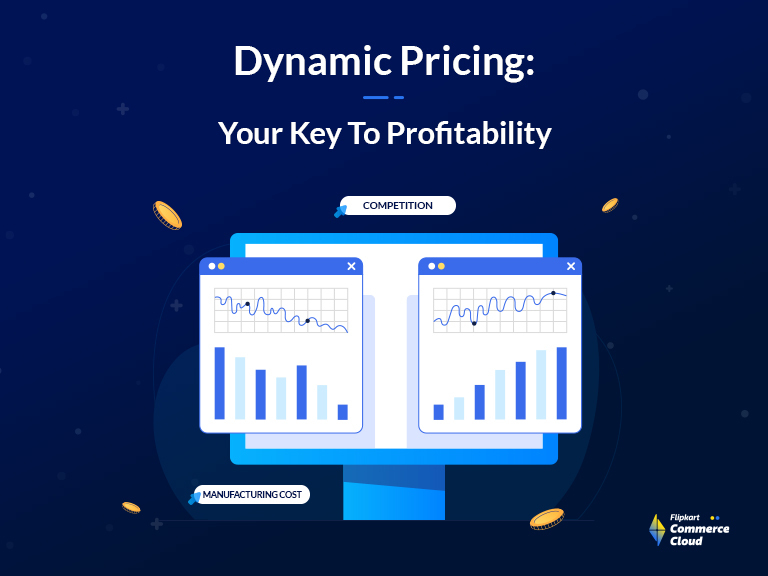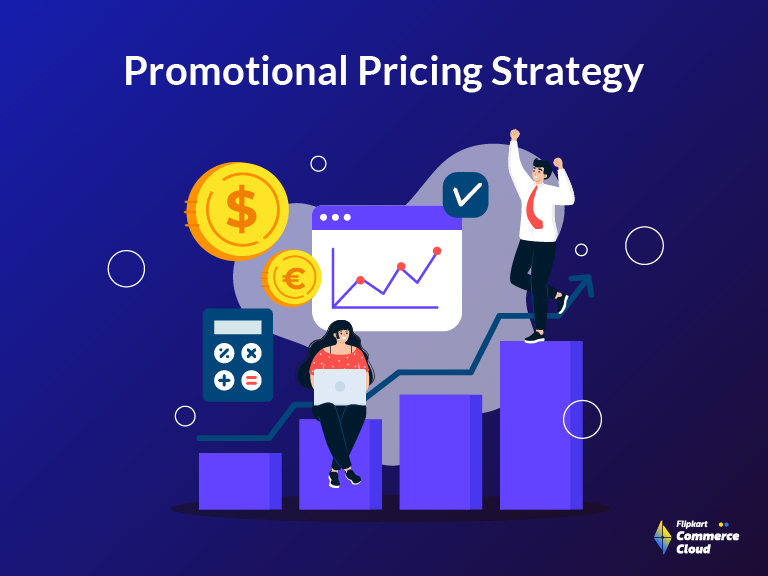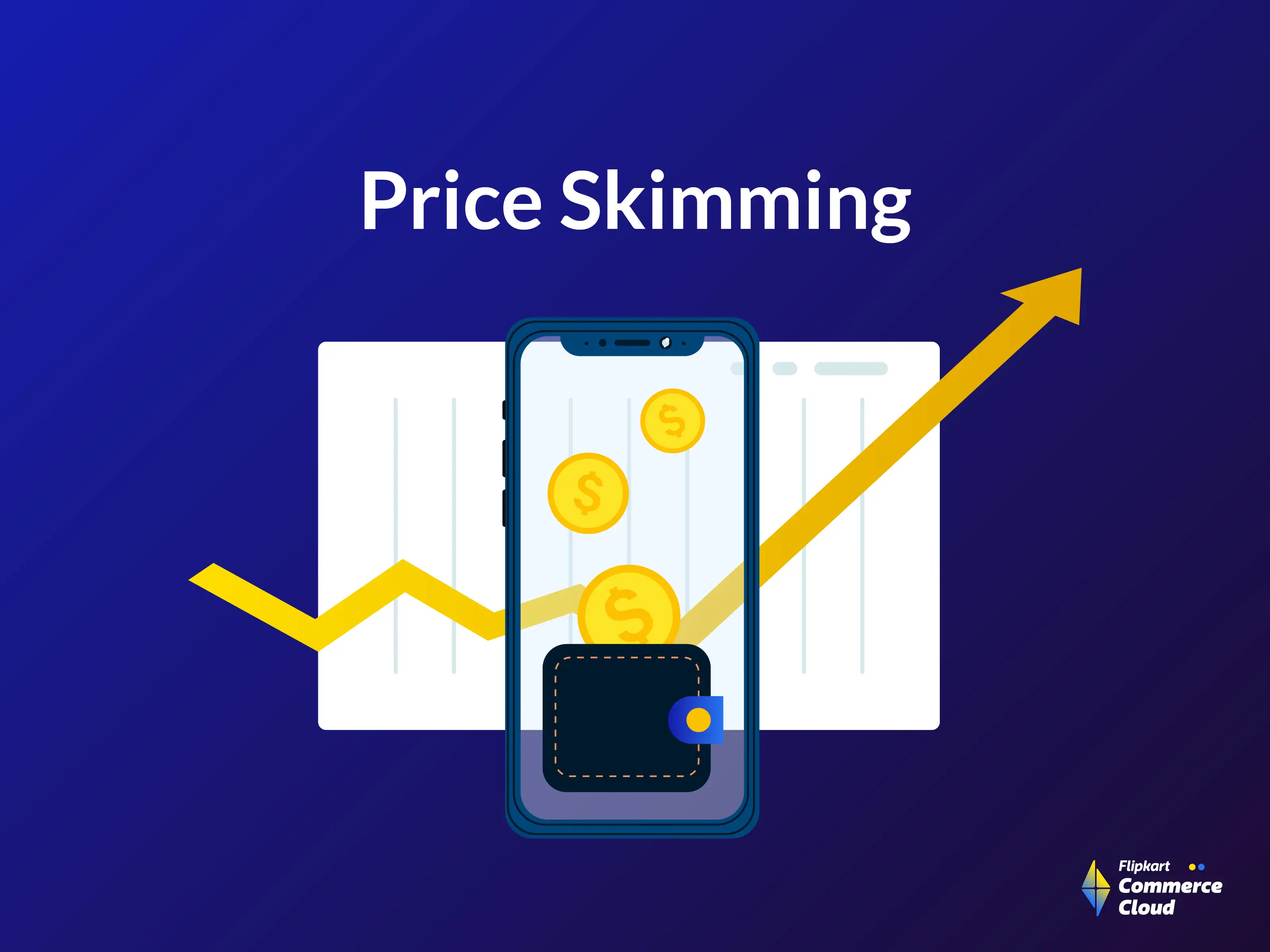Effective pricing strategy is key to any successful business, but how can you determine the ideal price points to maximize your profits? That’s where price optimization models come into picture providing a data-driven approach to help you analyze demand, costs, and inventory variations to determine the best pricing scenarios for your business.
From basic markups to today’s sophisticated algorithms, these models offer invaluable insights into demand elasticity and help businesses achieve company-specific objectives. By factoring in external and internal data, businesses can determine a range of prices: initial, optimal, discount, and promotional.
Additionally, by simulating customer reactions to various pricing scenarios, businesses can further adjust pricing to maximize profits and operational efficiency while enhancing customer satisfaction. These pricing models also aid in demand forecasting and inventory management, allowing for smarter decision-making based on data.
Now that we understand the significance of price optimization let’s look at the challenges retailers often face and how price optimization models help solve them.
What Is The Price Optimization Model?
Price Optimization Models are complex mathematical algorithms built to determine how demand for a product changes at different price levels based on extensive data analysis. Next, the algorithm matches the results with the cost and inventory level data to set the optimal product pricing most likely to improve profit margins.
How Machine Learning-Based Price Optimization Models Help?
Pricing is a critical and complex decision in economics, and there are many strategies to consider when setting the right price for a good or service. Companies may seek to maximize profit on each unit sold, increase market share, access a new market, or protect an existing one. Depending on their particular objectives, businesses can choose from various pricing approaches tailored for different goods or customer segments.
Here are some examples of how machine learning-based price optimization models help:
Optimize portfolio pricing
Problem
Retailers need to be mindful when it comes to pricing their products effectively. It’s not just a case of setting prices recklessly or concentrating only on individual items. Retailers must consider the interrelationships between products and the potential ramifications of price changes. Even minor price changes can have a significant impact.
A small price change can often trigger a cascade reaction across the product portfolio, negatively affecting customer behavior and leading to poor Key Performance Indicators (KPIs). Moreover, an extensive product catalog makes it incredibly challenging to fine-tune the pricing structure, given the countless latent relationships between sales of different products.
Solution
To achieve their desired business KPI, retailers require optimization models that consider not only the price elasticity of the product but also the cross elasticity with related products while suggesting optimal pricing.
Advanced pricing optimization models use a complex equation that combines various coefficients to determine the optimal prices for the product portfolio. By implementing differentiated pricing recommendations based on these models, retailers can predict and maximize their portfolio targets for each SKU.
The FCC’s pricing algorithms deploy demand elasticity and principles of game theory combined with stock volume, external market data, and competitive pricing to suggest consistent pricing performance across categories.
Optimize prices of individual products
Problem
When making pricing decisions, businesses need to consider multiple factors, not just business goals alone. They must look at market trends, competitor pricing, customer segments, and revenue synergies between products while making the final decision. Failing to do so could result in loss in revenue and excessive unsold inventory.
In short, businesses need to understand the price elasticity of demand, which is a non-linear relationship between the cost and sales volume. Higher the product’s price elasticity, higher will be its influence on sales. Businesses usually find it difficult to identify which products are more elastic than others.
Solution
Setting prices in modern retail is an art informed by data. Retailers strategically analyze customer behavior and optimize outcomes by using price elasticity to pinpoint key price points that influence demand. For example, an electronics retailer can use elasticity insights to determine the optimal range for a product’s price so that they can predict changes in sales volume, revenue, and profit.
Pricing optimization models look beyond internal factors and consider how customer behavior, price elasticity, competitor dynamics, historical data trends, and predictive models could influence profit margins. This approach allows retailers to be more informed when setting prices and ensure they are competitive in the ever-changing market.
Must Read: Dynamic Pricing Strategy Guide For Retailers
Price partition
Problem
Price Partition is a complex issue as it requires finding the perfect balance between pricing too high and too low. Too high of a price could turn customers away, and too low of a price could lead to lowered profits.
This balance can be difficult to find, especially when dealing with products such as luxury watches, which may lose their prestige if underpriced, or software subscriptions that may seem inadequate if over-discounted. This can negatively impact brand reputation, competition, and customer loyalty.
Solution
In the minds of shoppers, products with similar features and value tend to “cluster” together. They have very specific expectations for the minimum, average, and maximum prices they are willing to pay for products in each different segment. Here’s where price optimization algorithms come in.
They group products into clusters and determine the ideal pricing for each. This process takes historical sales data, median prices, and a year of sales to develop an optimal pricing strategy.
For example, smartphones with similar features can be grouped into clusters, and buyers will expect specific prices for each cluster. A budget-conscious buyer will usually stick to their preferred price range within a certain cluster. This alignment of price and value creates harmony between buyer expectations and pricing strategies.
Finding the 'magic' price point
Problem
When pricing products, customers tend to group items into clusters with their specific price thresholds. If you can identify these and strategically position your product between the minimum and maximum thresholds, you can increase sales and higher profits. Neglecting to take this approach can lead to lower sales numbers and missed revenue opportunities. An optimal price point is the retail price that ensures a good balance between demand and supply.
Buyers tend to clearly understand what they view as being expensive or cost-effective. This creates distinct price ranges, and when sellers align their prices according to these perceptions, sales will generally peak in the center of each segment and taper off towards the boundaries.
However, some sellers don’t follow this pattern and instead offer prices that are either too high or too low for what most shoppers consider reasonable; this results in lost profit opportunities and decreased sales.
Solution
Retailers can use a comprehensive price optimization system to better understand pricing dynamics and maximize sales. This system enables managers to identify different price points with the highest sales potential or zero interest from customers. It helps them determine the optimal prices for products that will trigger maximum sales volume and recognize critical “thresholds” that should not be exceeded to maintain customer interest.
This strategic approach helps retailers stay ahead of the competition and maintain their sales momentum. It relies on analyzing historical sales and pricing data for products over set time intervals in the past year, such as daily, weekly, or monthly. This data can either be a median or weighted by sales and can help retailers avoid entering a “dead zone” where sales stagnate and generate more successful sales.
Optimal price interval or price ladder
Problem
Creating an optimal pricing strategy for products in a competitive retail landscape is like navigating a complex maze. It requires a ladder-like pricing strategy that can counteract competitors’ moves and take advantage of their vulnerabilities. However, it is far from straightforward due to the variety of product categories and rapid fluctuations in pricing.
The complexity of deciphering competitor strategies, creating tailored approaches for different product categories, and managing rapid price changes while balancing customers’ perceived value and the retailer’s profit margins requires careful consideration. Crafting a ladder of precision with each pricing decision calibrating to competitors, products, and customer sentiments is necessary for optimal pricing success.
Solution
Retailers must make strategic decisions to surpass their competitors. This includes understanding preferred price points that shoppers engage with and the spectrum from premium to discounted pricing. Navigating this challenge is complex because prices often change daily, but pricing models can help retailers make informed decisions. Buyers tend to be willing to pay similar amounts for similar products over a certain range of prices.
Using a ‘price ladder’ chart, retailers can visualize current price points, strategic targets, and their pricing position against competitors. This helps retailers make sound pricing decisions. Artificial intelligence and machine learning-driven pricing software models take this to the next level by providing accurate market recommendations and predictions with up to 98% accuracy.
Must Read: How To Use Competitive Pricing Strategy To Protect Your Margins?
Outplay competitors
Problem
Setting the right prices for your products can be a challenge in a highly competitive market. You may struggle to know what the initial price should be for each product, as well as which categories you need to consider. This uncertainty can mean missed opportunities and reduced profitability. To successfully navigate this pricing landscape, effective competitive pricing strategies must be put in place to help determine the optimal initial price, capitalize on competitors’ weaknesses, and maximize revenue potential.
Solution
If you want to succeed, you need to take a strategic approach. Analyze what the category leader is doing and figure out which price points customers are willing to buy the most products from. Is it through discounts or by paying a premium? This will help you form your promotional pricing strategy.
Examine the prices and features of comparable products to develop a benchmark from which to work. Additionally, consider investing in modern price optimization solutions that will help you discover appropriate prices and discounts for particular product categories while staying informed about competitors’ pricing activities.
Promotional pressure
Problem
The promotional landscape has become increasingly competitive recently, as brands and retailers are pressured to participate in aggressive pricing promotions. This trend of “promo wars” has led to decreased sales and many companies’ erosion of market share. In addition, promotional intensity is on the rise, meaning that vendors and retailers are engaging in fierce price competition, which can cause prices to drop to extreme lows. All this ultimately leads to disastrous results such as decreased sales and shrinking market share.
Solution
To move forward, retailers must take a balanced approach when it comes to volume sold per product and deal category. This includes looking at top-selling products’ minimum, maximum, and median prices. Retailers can make measured and strategic decisions that prevent extreme approaches by using price optimization models. It helps analyze data and determine which products should be promoted with optimal pricing strategies.
Benefits Of Price Optimization Model
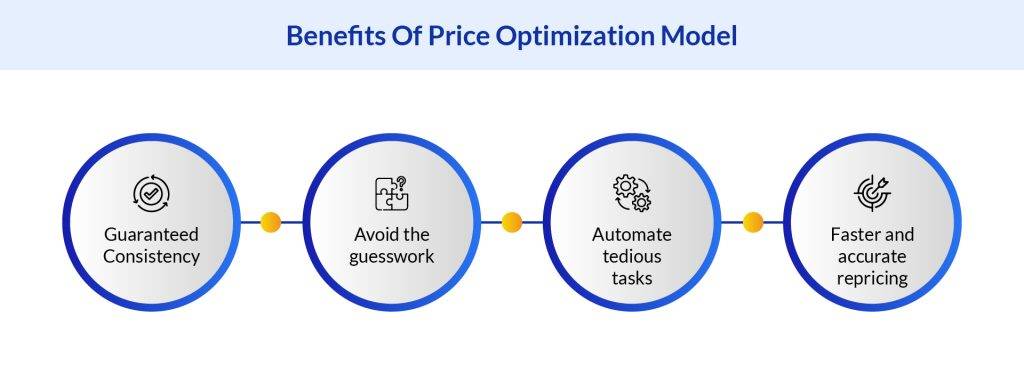
Price optimization models are more than just crunching numbers. They provide consistency, reduce uncertainty, and accelerate processes. Data, automation, and predictive accuracy enable businesses to streamline operations, make better decisions, and achieve quick financial gains.
Here are the benefits of price optimization models:
Guaranteed Consistency
Pricing optimization models help businesses remove inconsistencies in pricing decisions. It guards against disparities between comparable products by considering minute product details and providing reliable market insights. This allows retailers to better understand the complicated pricing landscape while aligning their internal processes for a more seamless experience. With its accurate market data and customer insights, businesses can make informed decisions with confidence.
Avoid the guesswork
No more guesswork regarding pricing decisions. With pricing optimization solutions like FCC’s Pricing Manager, you no longer need to worry about the ambiguity of pricing decisions. Rule-based algorithms powered by machine learning insights provide precision and clarity, and human-in-loop feedback ensures business objectives are met . Data-driven pricing strategies allow you to programmatically recalibrate prices across different platforms with improved accuracy and consistency. Whether setting the right price for a high-tech gadget or adjusting sales rates, you can make intelligent pricing decisions.
Automate tedious tasks
Automation streamlines processes and eliminates manual interventions, reducing the chances of human errors that can lead to costly consequences for businesses. But automation is only as good as the tools you use. FCC’s Pricing Manager is designed to provide smart automation alongside anomaly detection and alerts. Businesses can set up rule and approval flows, protecting against miscalculated pricing adjustments that could jeopardize financial gains and customer trust.
Speed up the decision-making process
The pricing optimization model offers powerful decision-making capabilities. It takes the manual labor out of the process, enhances speed and accuracy in pricing strategies informed by competitor shifts. They enable a more agile and responsive approach to decisions, helping you stay ahead of competitors in both local and global markets. As a result, you can move with precision, respond quickly and effectively while navigating turbulent markets.
Things To Keep In Mind While Selecting Best Price Optimization Models
Here are the key factors to consider when selecting a price optimization model:
Alignment with business goal
Setting clear and measurable goals is key when it comes to price optimization. Before you start, consider what objectives you want to achieve, such as increasing revenue, customer loyalty, or profits. Make sure your targets are realistic and define any possible constraints or challenges that may arise. For example, if boosting sales is the goal, determine how much of a sales increase you’d like to see within a given period – but be wary not to set prices too low and sacrifice potential profits.
Qualitative & quantitative data analysis
Effective price optimization relies on data-driven scenarios rather than guesswork. Data must be quantifiable and qualitative to comprehensively understand your market. Quantitative data is numerical and measurable, such as inventory levels, demand rates, historical information, demographics, sales metrics, price sensitivity data, and product features. On the other hand, qualitative data comes from customer surveys and can be visualized with tools like word clouds or infographics to provide insights into perceived brand value or customer opinions on products and pricing.
Rely on best practices and industry standards
Navigating the complexities of price optimization requires a strategic approach and embracing best practices and industry standards. Think of it as a journey, with the right model acting as your compass. Research industry leaders to learn from their tailored pricing tiers or plans. Monitor market trends and competitor actions to create strategies aligned with your brand identity. Throughout this journey, leverage best practices and industry standards for informed, successful decisions on price optimization models.
Consider behavior economics and consumer psychology
Price optimization is a balancing act between economics, psychology, and consumer perception. Use surveys to understand customer expectations and preferences to shape psychological pricing strategies that resonate with them. This includes experimenting with different packages, features, and structures to maintain a harmonious customer relationship while meeting their needs. As customer needs evolve, data must be constantly collected, arranged, and analyzed to keep the pricing strategy aligned with changing expectations for optimal success.
FCC’s Pricing Manager uses sophisticated machine learning models to analyze consumer behavior patterns quickly and reliably. It allows you to craft data-driven strategies that are tailored to the needs of your specific target audience so you can maximize your sales and ROI.
Dive Deep Into Price Optimization With FCC's Pricing Intelligence
Discover smarter pricing with Flipkart Commerce Cloud’s (FCC) Pricing Manager!
Flipkart Commerce Cloud (FCC) offers a powerful, AI-based Pricing Manager designed for online retailers, omnichannel businesses, and brands. Our retail experts guide the platform to provide mature SaaS solutions with a strong emphasis on data foundation. Through FCC’s scale tested algorithm and user-friendly UI, the platform quickly processes data to make your prices competitive and highlights any discrepancies that may arise so you can make real-time decisions.
Powered by AI and guided by retail experts, FCC blends machine learning and AI technologies to turn raw data into actionable insights. Here is what you can expect with our robust pricing solution:
- Automate and scale your pricing strategy while maintaining your business objective with human-in-loop feedback
- Set rules-based guardrails with approval flows for real-time anomaly detection
- Optimize margins and Gross Merchandise Value (GMV) with demand elasticity-based algorithm
- Test different pricing routes based on segmentations or business goals before finalizing
- Conduct thorough comparisons of assortment, exposure, and pricing against competitors’ offerings on various channels
- Effortlessly deploy and oversee multi-channel pricing strategies from a centralized solution
- Conduct scans for pricing and brand violations across channels, and much more
That’s not all, FCC’s Retail Media Platform is purpose-built to help businesses make data-driven decisions, with our suite of advanced solutions , success is just around the corner. Schedule a demo with FCC today.
